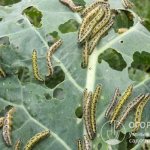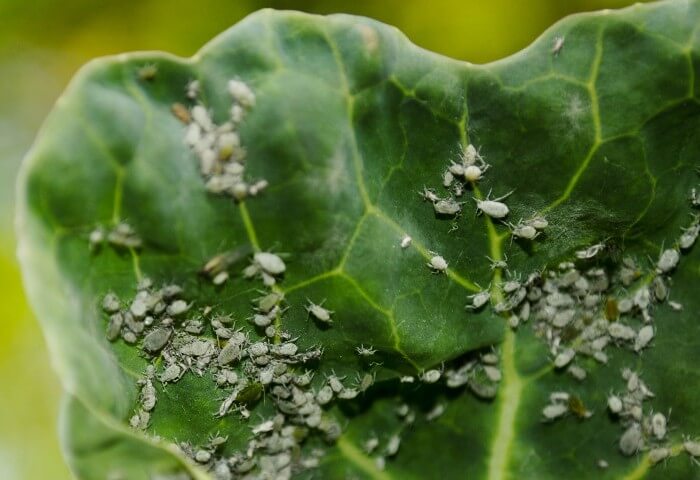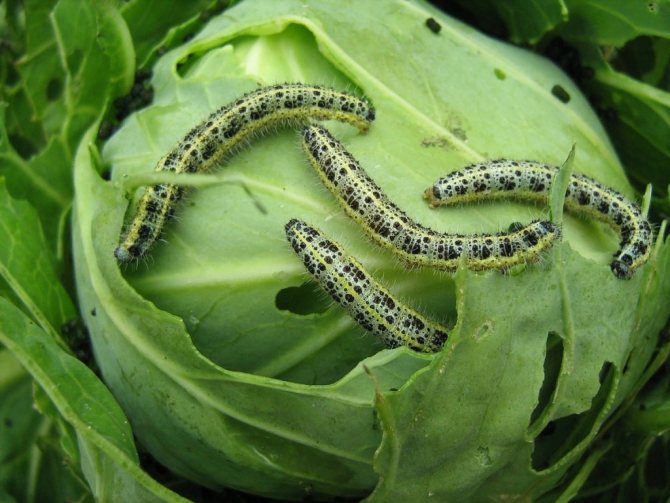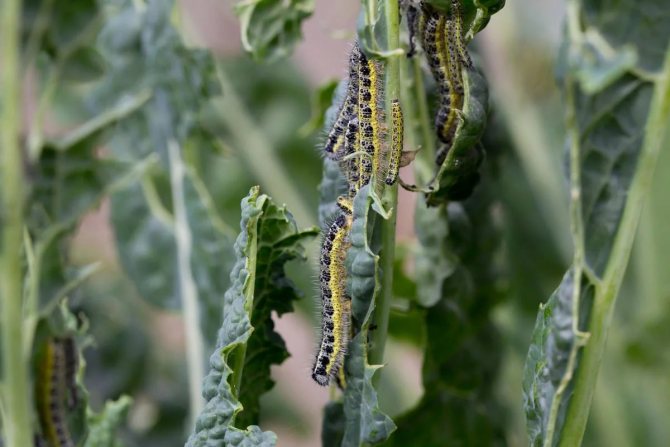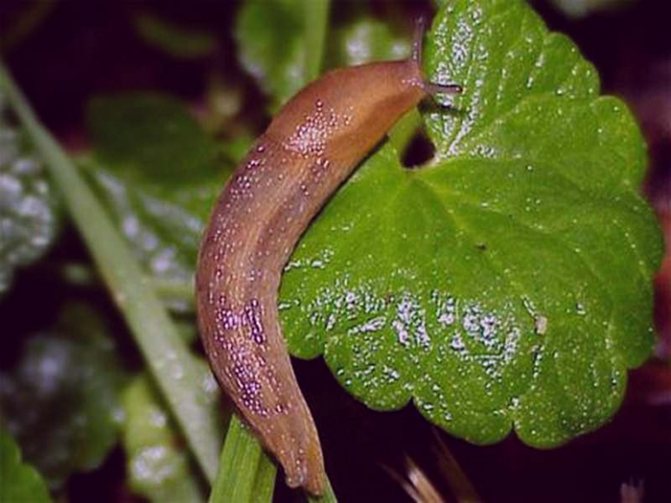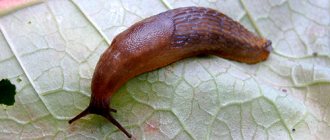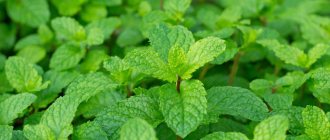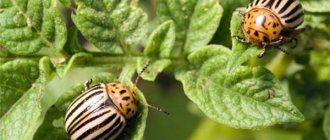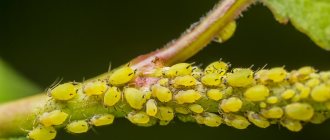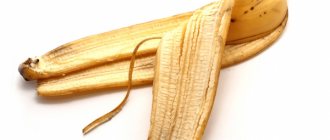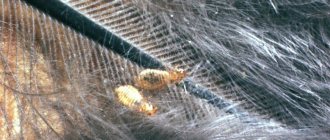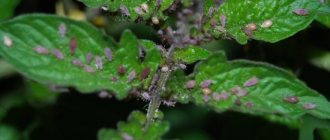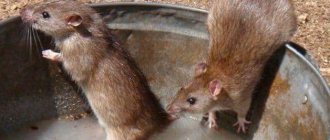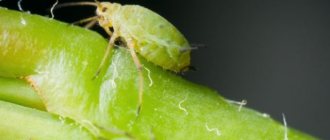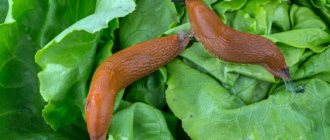Cabbage attracts many pests: a slug, aphid, a worm, a snail and, of course, caterpillars can damage the plant. Butterflies fluttering over cabbage beds are a signal that you should seriously think about how to get rid of caterpillars on cabbage. Pests damage leaves, shoots, slow down development and can lead to the death of the plant.
Butterfly larvae can ruin the entire crop if not taken urgently.
Know the enemy by sight: caterpillars that pose a threat to cabbage
At first glance, the easiest way is to collect the pests by hand. However, mechanical harvesting of caterpillars is ineffective; moreover, their poisonous secretions on contact with the skin can cause an allergic reaction.
In middle latitudes, the larvae on cabbage leaves most often lay 4 species of butterflies. To develop the right pest control tactics and take effective measures, you need to get to know the enemy better and find his vulnerabilities.
Cabbage moth
The insect lives for 30 days, it is thermophilic, migrates with the wind, and is nocturnal. Butterfly summer begins in April, when the night temperature does not drop below +10 ℃. The moth lays up to 400 eggs per life on the underside of cabbage leaves.
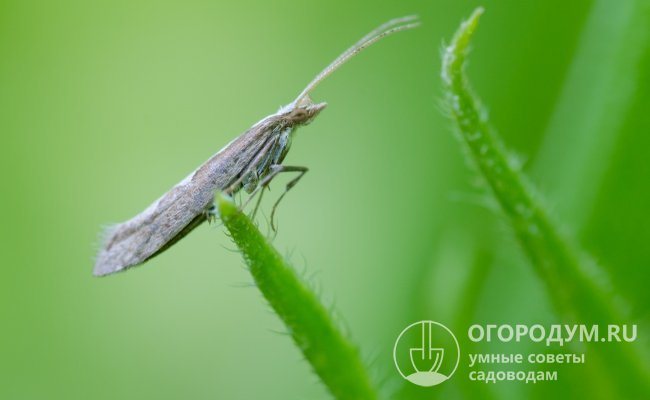
Cabbage moth looks inconspicuous - a small grayish moth
Small yellow larvae can exist inside the leaves, gnawing through the tunnels. Adult caterpillars come out - dark brown in color, 12 mm long. Pests pose a particular threat to plants in the leaf rosette phase - as a result of damage, the head of cabbage may not set.
Cabbage scoop (bat)
Moths are gray-brown butterflies with a wingspan of up to 5 cm. River floodplains and humid areas are especially fond of. For 3 weeks of life, it manages to hatch up to 2700 larvae. Bat caterpillars are dangerous primarily for early cabbage. Young green larvae with age change color to brown-brown with a yellow stripe. They can grow up to 5 cm.
The larvae eat the leaves, leaving only large veins, and gnaw out passages in the head of cabbage. Their excrement causes the plant to rot. Insects feed at night, during the day they hide in a head of cabbage.


The cabbage scoop gets its name from its nocturnal lifestyle and colors that resemble those of owls.
Cabbage moth
Small moth. Lays up to 60 eggs. Young larvae are light green. With age, the color changes: individuals become greenish-yellow, along the back they have two rows of warts with hairs, the head is green. Caterpillars are most active in July and August. They inflict the same damage on the plant as the cabbage scoop.


The cabbage moth got its name because of its dirty yellow or orange color, as well as because of the gluttony of its larvae, which "burn" plants without fire
Cabbage and turnip whites
Cabbage white, or cabbage, is a daytime butterfly with white wings with dark spots.
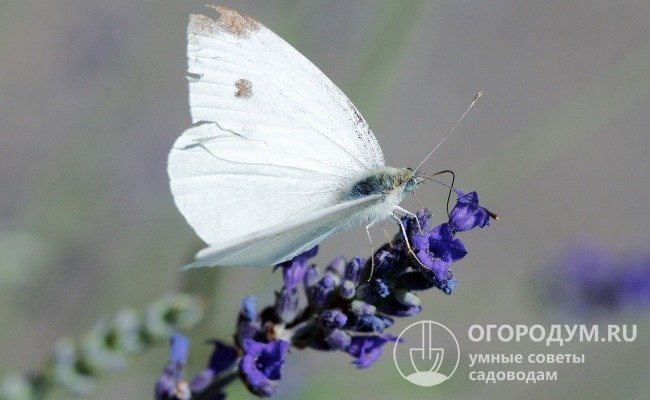

White butterflies, unlike their larvae, feed only on nectar and pollen from flowers
They are especially active in hot weather.The female of the cabbage lays eggs on the lower leaves of the plant in heaps of up to 200 pieces each, the white turnip first lays an egg in one part of the leaf, then several eggs in other parts of the same leaf.
It is easy to determine the caterpillars of the white-haired woman: their length is up to 5-6 cm, the body is green, has longitudinal stripes, is covered with sparse hairs, the gland on the neck secretes a poisonous liquid.
The larvae are gluttonous (especially in the middle of summer), gobble up the cabbage leaf from the edges, leave excrement, because of which the vegetable begins to rot.
Life cycle and reproduction of the cabbage butterfly
In early May, the cabbage butterfly becomes active and multiplies rapidly. During the season, the insect is capable of producing up to five generations, so getting rid of cabbage is not easy. The life cycle of a cabbage butterfly includes 4 metamorphosis states:
- Egg. The fecundity of the female is 250-300 eggs. An adult lays them on the seamy side of the leaves of the culture. Ripening period - from 5 to 12 days.
- The size of the butterfly caterpillar is up to 35 mm. The larva feeds gradually and often (about 4 times) molt, and the interval may change each time. This is due to the ambient temperature as well as seasonal humidity. The larval stage takes two to five weeks. After birth, caterpillars take root in cabbage leaves and make moves in them. Here they stay for several days (2-3), after which they crawl out onto the surface of the leaf and begin to devour its intact skin. Having finished feeding, they remain on the plant, starting to weave a cobweb cocoon. The pupation procedure takes place in it.
- The pupa of a butterfly is an intermediate in development. She is the wintering phase of the cabbage whites. The cocoon, shaped like a barrel, is three centimeters high in height. His color is dirty green, has an admixture of yellow, dotted with dark blotches.
- The small white adult is the definitive stage in which it does not grow or change. In this phase, the insect is capable of reproduction and dispersal.
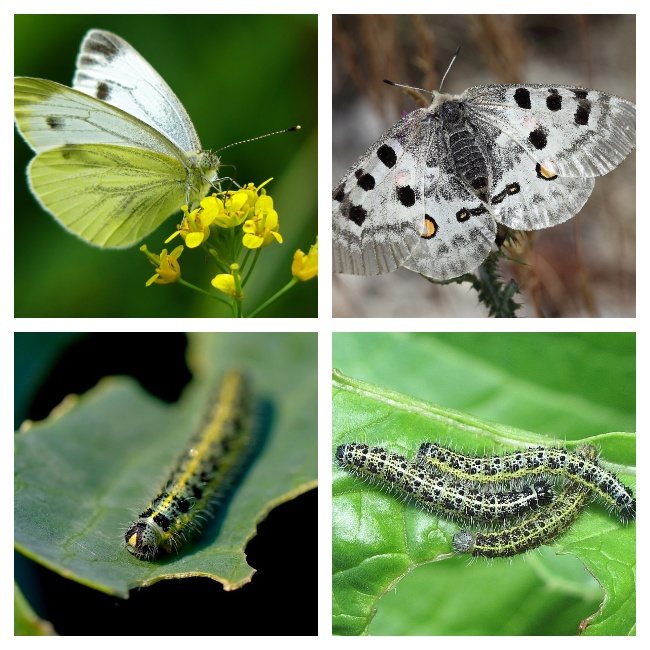

Chemistry against caterpillars
You can quickly and radically solve the problem with the help of pesticides - after 1-2 hours after treatment, most of the caterpillars will die.
However, the use of chemistry has many side effects:
- not only pests will suffer, but also other living organisms, the local ecosystem may be disrupted;
- adults are less sensitive to poisons than young larvae, therefore, most likely, the plants will have to be sprayed with poison again;
- pesticides can harm the person himself - you must adhere to safety rules during processing;
- poisons cannot be used less than a month before harvest.
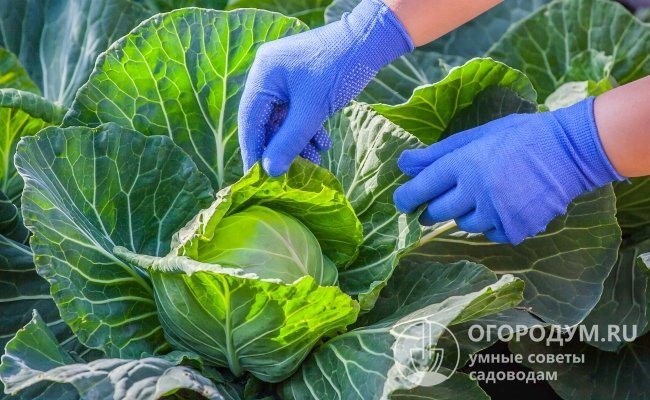

Chemical treatment is carried out in calm weather using personal protective equipment
When deciding to buy a chemical pest control, pay attention to the degree of its danger to people, pets and bees. The drug, on the packaging of which it is written that the hazard class is 1 or 2, should not be used at the summer cottage.
Among the most popular (and least hazardous) chemicals are Fufanon, Kemifos, Antitlin-P and Grinda.
Biological products such as "Bitoxibacillin", "Fitoverm", "Nemabakt", "Lepidocid", "Dendrobacillin" and "Entobacterin-3" will also help to successfully get rid of caterpillars on cabbage. They contain live bacteria that kill pests. The use of drugs of this type allows you to fight cabbage parasites with minimal negative consequences for humans, pets and beneficial insects.
Allies in the fight for the harvest
Natural enemies of butterflies and their larvae can provide invaluable help in the fight against parasites.Practice shows that using such allies, it is possible to destroy up to 90% of cabbage pests.
Among these assistants, the most effective are:
- birds - swallows, tits, sparrows are good at catching butterflies, and starlings, rooks, blackbirds and cuckoos (the only bird that is not afraid of poisonous caterpillars) willingly eat larvae. Some gardeners recommend using chickens, but, in addition to caterpillars, they will also bite young plants;
- amphibians - first of all, frogs and toads;
- reptiles - lizards;
- insects - wasps, praying mantises, ground beetles, grasshoppers, nematode worms, etc. Particular help in the fight against cabbage whiteworm is provided by the ridge apanteles, which lays its larvae in the body of a cabbage caterpillar. The larvae, feeding on the fat and lymph of caterpillars, immobilize and kill them within 8-12 days. Against scoops and moths, trichogramma ordinary (ovate) is effectively used, which lays its eggs in the eggs of the pest.
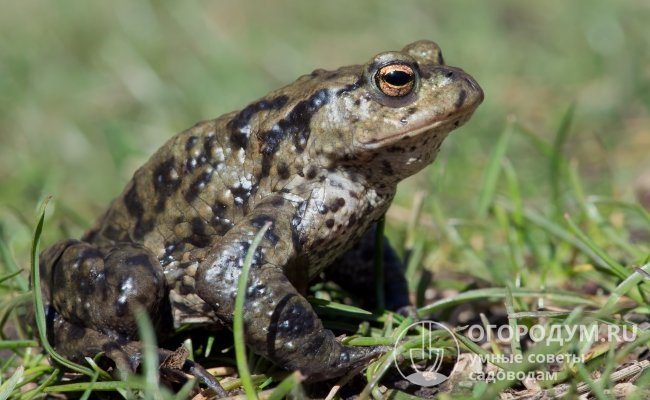

The diet of toads and frogs includes not only winged insects, but also worms with caterpillars
Folk remedies: safe and effective
Everyday practice has developed many effective means of dealing with cabbage pests. So, it was noticed that cabbage plants look for "their" plants by smell. Using aromatic herbs and strong-scented liquids can knock butterflies off the trail. This can be achieved by planting around the perimeter of the garden and between cabbage beds mint, basil, dill, garlic, sage, marigolds, etc..
A good way to trick cabbages is to scatter in cabbage beds tomato stalks or potato tops.
Another trick is to use eggshell: Above the beds of broccoli, cauliflower or white cabbage, threads with shells strung on them are suspended on a string. The shells trembling in the wind outwardly resemble fluttering butterflies. This scares away insects - the territory is already occupied.
In order to get rid of caterpillars on cabbage with folk remedies, it is not necessary to go to the store for expensive drugs. Everything you need can be easily found at your fingertips. So, the processing of cabbage with decoctions and infusions prepared at home is effective:
- dandelion... For 10 liters of water, you will need 500 g of crushed raw materials (stems, leaves, roots, flowers) and 1 tbsp. l. liquid soap. You need to mix all the ingredients and insist overnight;
- hot red pepper... The recipe is simple - for 1 liter of water, you need 100 g of fresh (20 g of dry) pepper. Boil the pepper and cook over low heat for 1 hour. Strain (through a fine sieve) and stand for 48 hours. Before use, dilute the infusion with clean water (bring the volume to 10 liters). In this and the following recipe, experienced gardeners recommend adding laundry soap (40 g) to the infusion for better adhesion;
- from tomato stems, bitter wormwood... Insist raw materials (350 g) for 6 hours in 10 liters of boiling water;
- from wood ash - Soak 2 glasses of ash for 1 day in a bucket of water.
Soda - an inexpensive and effective pest control. To get rid of caterpillars on cabbage using baking soda, you need to mix it with flour (1: 1), if possible, add pollen of any cruciferous and sprinkle cabbage leaves with this mixture. This plant-friendly mixture is harmful to pests.
The solution against caterpillars based on vinegar: a bucket of water (10 l) will need 1 tbsp. l. vinegar essence (70%) or a glass of 9% vinegar.
It should be remembered that cabbage pest control is more effective when several methods are used at the same time.


Prophylaxis
The appearance of caterpillars and cabbage butterflies on the site can be prevented. The following methods help in this:
- before planting, the soil is well dug up and spilled with any insecticide - after winter, pupae may remain in it;
- near the cabbage ridge, they clear the place of debris, wash the fence with a stream of water to wash away insects;
- after planting cabbage for the third week, it is irrigated with onion infusion (for 5 liters of water - husks from 5-6 onions). Irrigation is repeated in a week. Onion peels can be replaced with 200 g of pine cones;
- you can cover the cabbage with a mosquito net at the beginning of summer to protect it from pests;
- herbs with bright aromas are planted next to cabbage: dill, calendula, thyme. The smell repels insects.
To prevent the pest from being caught by surprise, the growth of cabbage is monitored daily. As soon as white wings were noticed in the garden, and holes appeared on the leaves, they begin more radical measures to combat insects.
Preventive measures: how to protect the garden from the invasion of caterpillars
Pest control will be much more difficult if preventive measures are not taken in time. Many problems can be avoided with a few simple steps:
- after harvesting, thoroughly clean the garden and remove all remaining debris - tops, roots and other plant residues, take it out or burn it;
- dig the soil to a depth of at least 14 cm, use agrofiber;
- if there are areas with wild grass near the garden, treat them regularly - mow the grass, pull out flowering plants, etc. (Pay special attention to the common wild plants of the cruciferous family (common rape, shepherd's bag, etc.). They have pests in common with cabbage, and must be destroyed first);
- feed the birds during the winter to attract them to the garden and vegetable garden;
- Consider in advance the protective planting of spicy and aromatic plants.
The appearance of caterpillars in cabbage beds is a nuisance, the elimination of which can take a lot of time and effort, but the opportunity to get a rich harvest of tasty vegetables is worth it. Everyone can choose the best way to get rid of caterpillars - from expensive chemicals to simple improvised means.
Causes and signs of the appearance of whites on cabbage
As soon as the butterfly begins to fly over the cabbage, this is an excuse to inspect the plant and start fighting the cabbage butterfly. There is no justified reason for such an invasion of cabbage. It has been noticed that the white butterfly is activated in hot and dry warm weather. Rainy weather has a detrimental effect on her.
This pest can be identified by the following criteria:
- damage to cabbage leaves - they begin to turn yellow, dry, lose elasticity, pinpoint holes appear;
- the growth of the head of cabbage stops;
- caterpillars appear.

